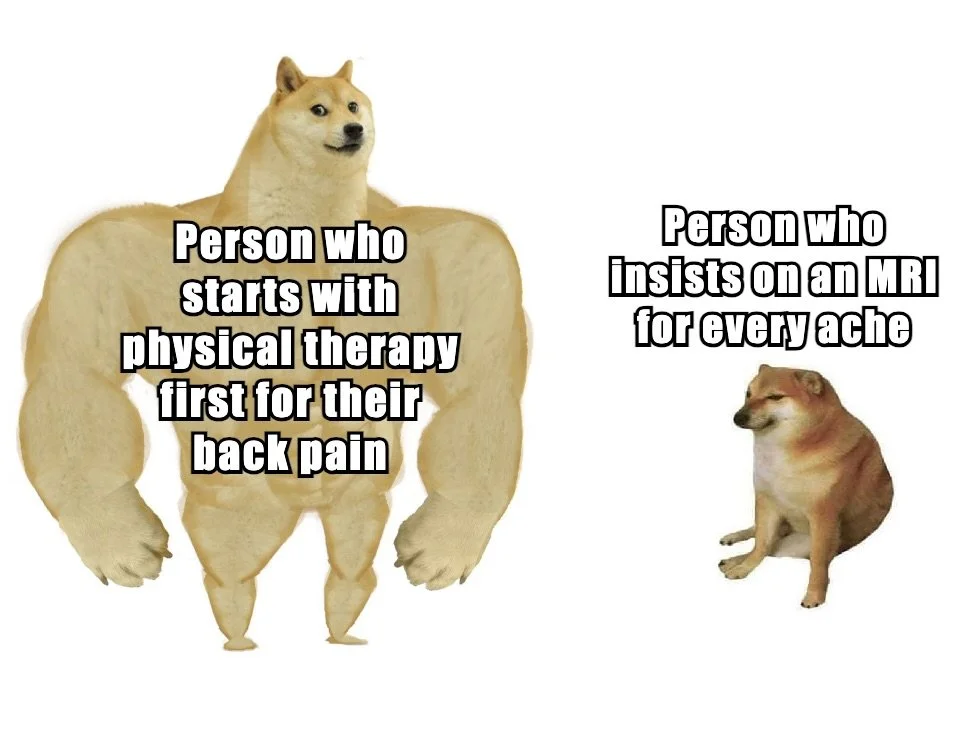May 18, 2025: The Hidden Downside of Getting an MRI for Back Pain
Hi friends,
If you've experienced back pain (as 80% of people do at some point in life), you've likely wondered whether you should get imaging to diagnose the problem.
When my patients ask about getting an MRI, I almost always recommend against it. However, there are specific situations that may require imaging:
Suspected fracture
Possible cancer
Signs of infection
Significant neurological deficit
The truth is that MRIs excellently display the details of tissues in your lower back. However, just because an MRI shows a disc herniation or degenerative disease doesn't mean that's what's causing your pain.
One study imaged people aged 19-80 and found that 94% of patients had abnormal MRI findings.
Another study found that up to 90% of healthy people over the age of 60 have findings of bulging discs on MRI.
The challenge is that many people with abnormal MRI findings experience no back pain whatsoever, while others suffer excruciating pain despite minimal findings on their imaging.
This is precisely why I typically advise against getting an MRI unless something serious is suspected. Incidental findings can trigger fear and avoidance of activities, potentially leading to increased weakness and pain.
So, how do we make sense of this?
For most nonspecific low back pain, physical therapy proves most effective. Through PT, you'll:
Learn to move more efficiently
Identify ways to modify activities based on your pain
Build resilience in your body’s tissues
Back pain is complex, and we don't fully understand it yet. But we can help make you stronger and improve your movement while decreasing pain.
Learning about pain—why you hurt and what you can do about it—empowers you to do more and hurt less.
Until next week,
Kevin
✍️ Quote I’m reflecting upon
"There is nothing so certain in our fears that’s not yet more certain in the fact that most of what we dread comes to nothing.”
— Seneca
